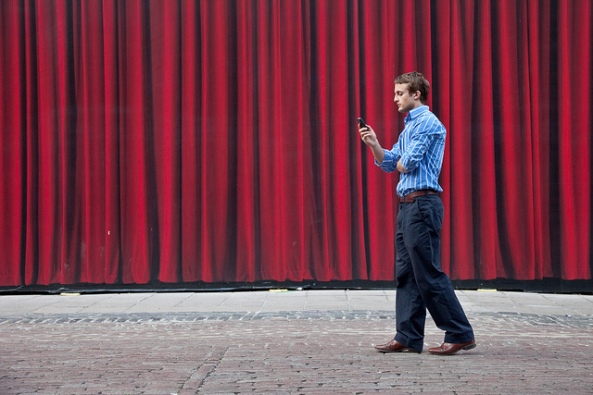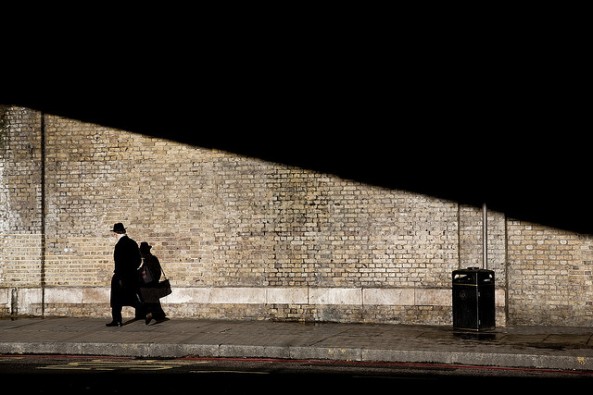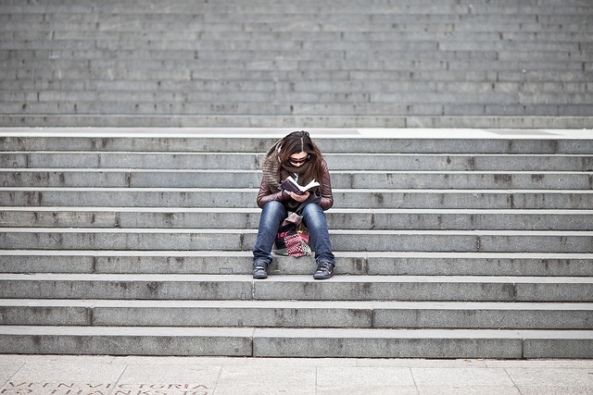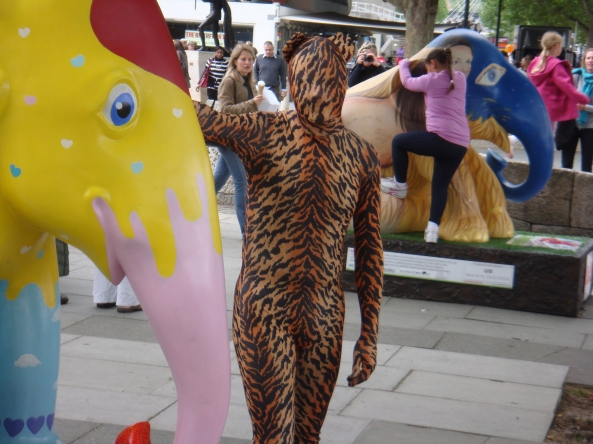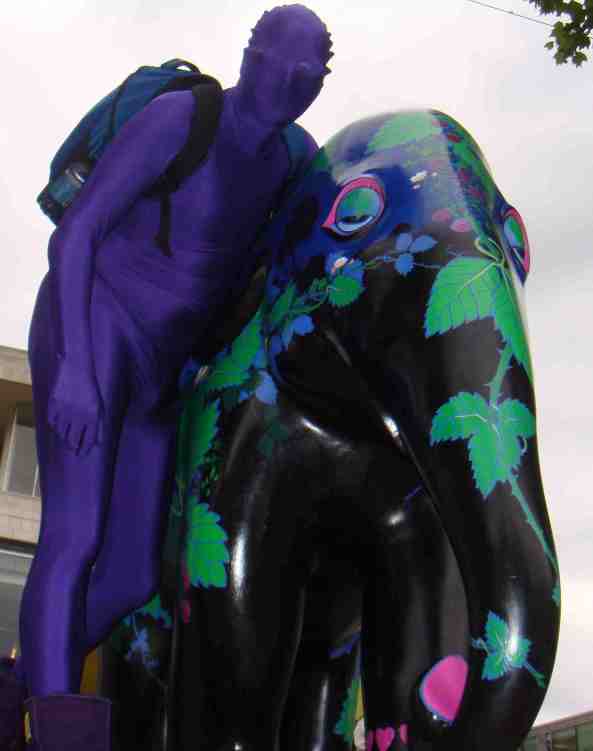Listen to a Londoner is a weekly interview with a Londoner – someone who lives in this city, born here or elsewhere. If you’re up for being interviewed, email littlelondonobservationist@hotmail.co.uk.
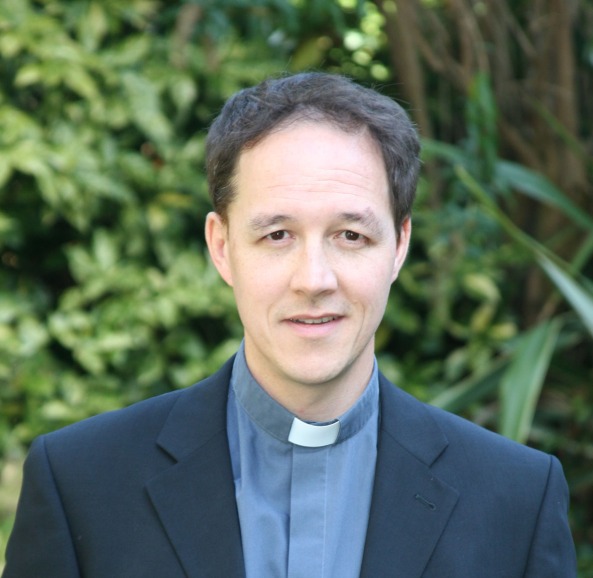 Fr Stephen Wang
Fr Stephen Wang
Fr Stephen Wang is a Catholic priest in the Diocese of Westminster, London. He is Dean of Studies at Allen Hall seminary in Chelsea, where he also teaches philosophy and theology. His latest book is Aquinas and Sartre: On Freedom, Personal Identity, and the Possibility of Happiness, published by Catholic University of America Press. He blogs about culture and faith at Bridges and Tangents.
LLO: As a born and raised Londoner, what are the most noticeable ways the city has evolved in your lifetime?
SW: It’s bigger and busier. I remember a study recently about how our walking speed has increased (they secretly time you crossing bridges etc). It’s more culturally and ethnically diverse. Immigration has enriched London immensely. Random landmarks that didn’t exist when I was born in 1966: the Gherkin, the Millennium Bridge, the London Eye, Oyster Cards, sculptures on the fourth plinth, Boris Bikes, Tate Modern, the ubiquitous CCTV camera. Tragic losses: the Routemaster bus.
LLO: Tell us a bit about your background and your blog, Bridges and Tangents.
SW: I was born in University College Hospital just off Tottenham Court Road, when my parents were living in Chiswick. I grew up in Harpenden, near St Albans. I’m a Catholic priest and I work in the seminary in Chelsea, where we prepare men for the priesthood. I never imagined I’d start a blog. It happened quite quickly. I was thinking of writing a book, and a friend pointed out that if I really wanted to communicate and share ideas, then a blog would be more immediate and reach far more people. The penny dropped.
LLO: Freedom is your most used tag on your blog. In a recent post, you wrote “Perfect freedom is being able to step off the back of a London bus whenever you want, whatever the reason, and walk into the sunset without a bus-stop in sight.” Are there other London moments that give you a perfect sense of freedom?
SW: The fact that London is a city for walking around gives me the greatest sense of freedom. Other random moments of exhilaration, freedom and space include: sitting at the front on the top deck of a double-decker bus; looking at the cityscape from the middle of any of London’s beautiful bridges; jaywalking with abandon — in the knowledge that this would be illegal in some countries; walking through the parks; and along the river at South Bank.
LLO: Can you recommend a few places in London to go for a sense of spirituality without stepping foot in a church/temple/mosque, etc?
SW: Whenever the next Kieslowski retrospective runs at the British Film Institute; standing over the Greenwich Prime Meridian line, knowing that you are at the still point of the cartographic world; walking round the Serpentine; the Jubilee Line station at Canary Wharf.
LLO: As a catholic priest and philosopher, how important would you say religion is in people’s lives in London today compared to when you started out in your career?
SW: There are various crosscurrents: some people are much more secular, hardened in their secularism, and dismissive of religion. Yet many more people seem interested in religion who are not believers — as if they are more open to spiritual and transcendent questions, more open to the idea of spirituality and prayer. And religion is a bigger cultural and political reality than it was 10 or 15 years ago. Plus the new immigrants tend to be people of faith (indeed anyone coming to London from outside Western Europe tends to be a person of faith!)
LLO: You recently contributed to a BBC Online article about celibacy, sharing your own experiences. The post on your blog includes tags “happiness” and “loneliness”. Is this commitment one you ever regret or are you content in your decision?
SW: I don’t regret the decision I have made at all. The whole life of being a priest, including celibacy, has brought me enormous happiness. And the celibacy itself has given me a real freedom, a freedom of heart – to be present with other people in all sorts of wonderful ways; and to pray in a way that would be difficult if I had the responsibilities of family life. I couldn’t live this way without the love of friends and extended family and the communities I have lived in over this time.
LLO: Tell us about something, someone or somewhere you’ve discovered in London that you think the rest of us should know about.
SW: One secular and unknown: The Clockmakers’ Museum at Guildhall, a single room containing the whole history of clocks and watches, including John Harrison’s 5th marine timekeeper made famous by the book Longitude. One religious and very well known, but I’m still amazed by how many Londoners have never been in it: Westminster Cathedral (not the Abbey), an oasis of calm and devotion near Victoria Station, full of amazing art and architecture.
LLO: With Christians, Muslims, Hindus, Jews, Sikhs, Buddhists and others living side by side in London, what sort of atmosphere is created when people of every religion mingle in this melting pot city?
SW: The whole world is here in London, and probably every language and religion. It’s good that we can live side by side, and in peace. Perhaps people don’t talk enough: We occupy the same social space, but often stay within our own mental worlds – unless there is something like a school or sports club or whatever to bring people together. London Citizens is a wonderful grassroots example of people of all faiths and none coming together for justice issues and forming real bonds through that common work. When I get back from Lourdes I want to start talking to strangers in London, but very soon I realize I am becoming one of those crazy people that Londoners fear…
LLO: What do you say to people who are suspicious of religion as being manipulative or deceptive?
SW: It’s true that religion can sometimes be manipulative and deceptive – we have to admit that and watch out for it very carefully. And as a Catholic priest I wouldn’t push the abstract idea of ‘religion’ for its own sake. But religions can also be sources of spirituality, community, liberation and healing for many people. That’s something to be open to and not afraid of.
LLO: What’s your favourite part about living in your postcode?
SW: Being near the river; living close to three cinemas; the number 19 bus.
Thanks Stephen!
For more Listen to a Londoner posts, click here.










